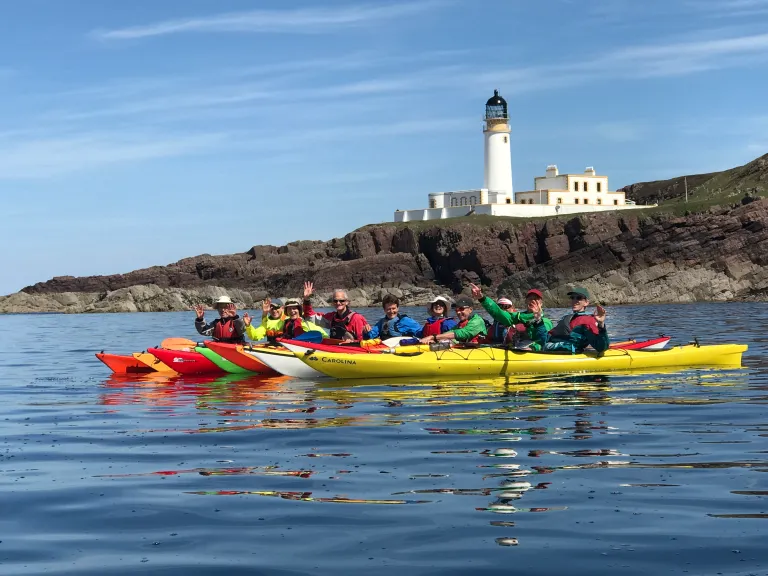May 15th Return to Rua Reidh Lighthouse via caves and arches
May 15th Return to Rua Reidh Lighthouse via caves and arches- After yesterday’s successful trip we decided to do it all again and headed back out to the lighthouse with Sue and her friends, via the many caves and sea arches.
The name “Rua Reidh” is a semi-anglicisation of “Rubha Rèidh” meaning a flat headland. A lighthouse on Rubh’Re Point was first proposed by David Stevenson in 1853. Building was started by his son, David Alan Stevenson in 1908 and the light was first lit on 15 January 1912. The light came from a paraffin lamp, subsequently converted to electricity. The original Fresnel lens is now in the nearby Gairloch Heritage Museum. The fog siren gave 4 blasts every 90 seconds. The fog siren was discontinued in 1980 as well as all the fog sirens in Scotland. The red fog siren trumpet, along with its clockwork timing mechanism were removed and were donated to the Gairloch heritage center and put on display. The siren’s tower and engine room were partially demolished. All that is left is the first floor of the siren’s tower and the front facade of the engine room.



The trip to Rua Reidh starts from Melvaig (land of the bent grass). Melvaig is a remote village on the coast. In 1805, John M’Callum crashed his schooner full of herrings into the rocks a distance of one mile from the shores of Melvaig; all of the crew perished save for one. A Melvaig resident named John Smith stole the sea boots from one of the bodies washed up along the shore, and box containing 400 pounds was lost during the shipwreck and recovered by a resident, never to be returned.
By 1895, a boat slip was constructed by the government in the wrong location, this rendered the Dock useless for the local fishermen and had to be altered in later years after a parliamentary inquiry.
Melvaig has a long history of smuggling goods, with the many caves along the shoreline hidden by the diversion of streams which create waterfalls blocking view of the cavity. Both the production and smuggling of alcohol was an important part of life for many residents, with many tactics of subterfuge.

Comments are closed